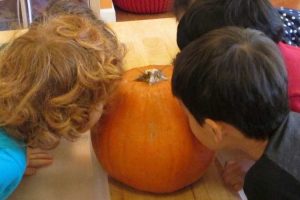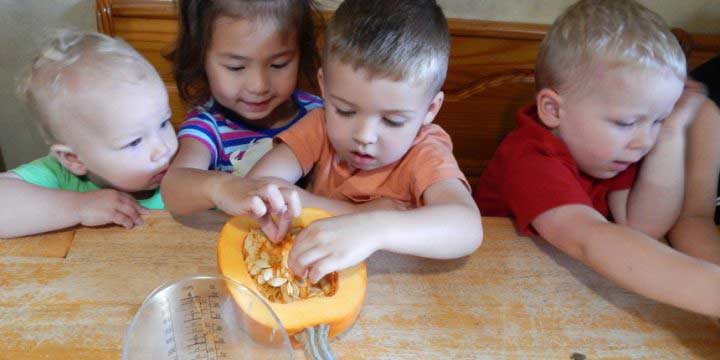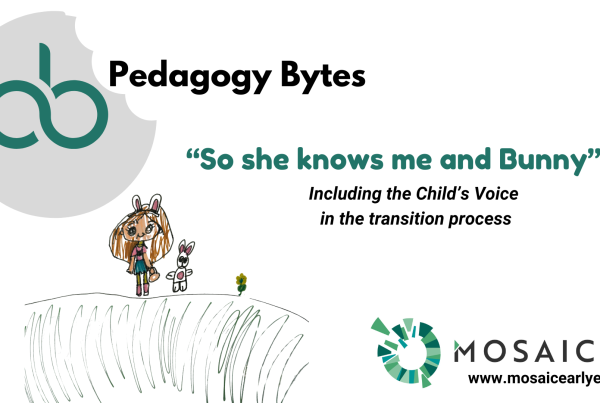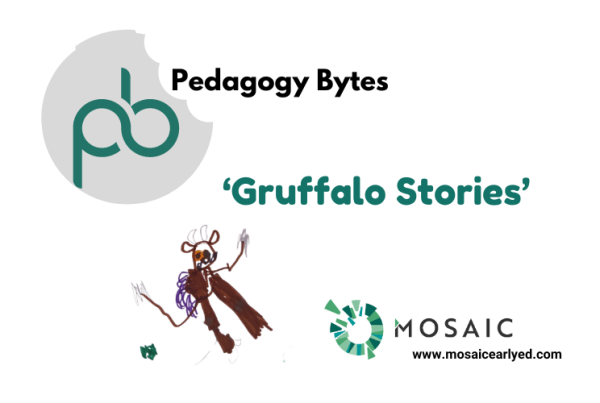In the lead up to Halloween, lets resist the temptation to photocopy the age-old Halloween templates.
Meantóir is currently transforming the emergent curriculum training programme to an online version and this will be ready in the coming weeks on www.earlyedcpd.ie As a flavour of the emergent approach and facilitating enquiry-based learning – let’s start with one emergent interest – the Halloween annual event.
The emergent curriculum approach is often misunderstood or misrepresented. One myth is that planning isn’t required, and curriculum programmes emerge solely from children’s interests. This is not the intention of the emergent curriculum. Put simply, emergent curriculum is a teaching strategy that empowers educators to use relationships, space and materials to spark and ignite learning.
So give us an example I hear you say!
Ok, Halloween is an annual event. Children know about Halloween, its part of their world and they can see representations in their environment – in shops, at home, in books and stories at this time of year. So lets use this emerging ‘interest’ to build on their learning and development against the goals of Aistear.
- Set up an observation table containing 2 pumpkins.
- Place plenty of drawing and writing materials including paper, pencils, coloured pencils and markers and scissors nearby. Add magnifying glasses, clipboards, glue and creative junk materials.
- Print photos of pumpkins from the internet, different shapes and sizes and place behind your display table.
- Then take a step back.
 As children explore the table and its contents, invite them to draw the pumpkin and pin the pictures on the wall. Cut one of the pumpkins in half and set up chart to record how the cut pumpkin changes over the days and weeks. Introduce describing words. Encourage children draw and to record information in their preferred way.
As children explore the table and its contents, invite them to draw the pumpkin and pin the pictures on the wall. Cut one of the pumpkins in half and set up chart to record how the cut pumpkin changes over the days and weeks. Introduce describing words. Encourage children draw and to record information in their preferred way.
Being curious and inventive little people, the children are very excited about the new addition to their classroom. They will ask questions, make observations and explore. They will use the magnifying glasses to see the details and then drawing what they observe.
When children ask questions – do not jump to give them an answer. Instead wonder aloud how they might figure this out. Use the children’s emerging interest as an opportunity to research and discover, to teach children how to learn by not only observing but also using resources such as books, magazines and an internet search. Take pictures for vibrant and meaningful learning stories, video stories and picture stories.

In the weeks that follow numerous drawings of pumpkins are on display in the classroom, and the children count seeds, use their senses, learn new words, and write on their drawings. The children’s interest will be sustained because the subject is real and meaningful to them. The scientific inquiry, creativity, language and literacy, sensory learning, fine motor opportunities naturally fall into place around the pumpkin investigation. Dispositions like questioning, investigating, interest and using technology are evident. Aistear goals are achieved as a fluid and ongoing process – and every child’s experience is different, meaningful to them and unique. Unlike the pumpkin template.
The Role of the Skilled Educator
The educator is central in enabling children to learn, develop and thrive in an environment where the educators themselves are motivated and enthusiastic. Continuing professional development deserves time and attention, as it opens up new ideas and challenges old ways of working. Changing outcomes for children requires educators to challenge what they know and extend their skills and learning through continuing professional development.
The next Meantóir online CPD programme will be ‘Emergent Curriculum’. Coming soon on www.earlyedcpd.ie




